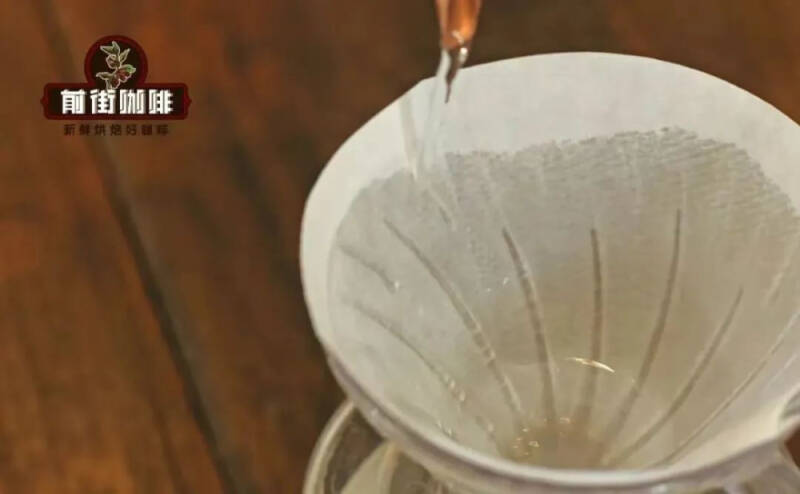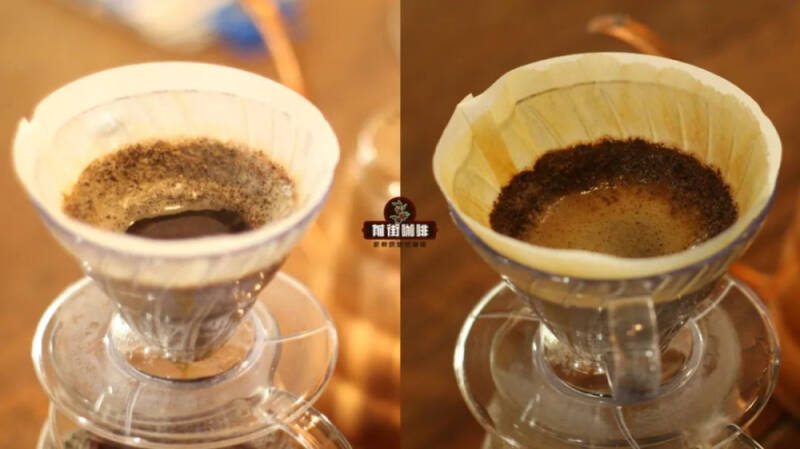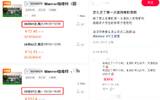Should filter paper be wetted? What impact will non-wet filter paper have on hand-brewed coffee? Why do you need to use twice as much water as powder for steaming?
Last month, the street shared the difference between wet filter paper and non-wet filter paper, and many friends who like to specialize in research noticed a key point mentioned in the article, that is, non-wet filter paper will absorb coffee liquid in the brewing process. But because the succinct answers in the article obviously did not answer their doubts, they asked backstage: will the amount of liquid absorbed by different filter papers be the same? If the coffee liquid is missing, will it have any effect on the taste of the whole cup of coffee?

Fine! Since you sincerely ask questions, then Qianjie will do an experiment to answer you: in this experiment, we will use two kinds of filter cups, V60 and Origami, one using tapered filter paper and one using cake filter paper, each as a group to see what kind of difference there is between wet filter paper and non-wet filter paper coffee in terms of liquid volume, concentration and taste. (filter paper does not carry other undesirable properties (such as odor))
In the brewing experiment, the coffee beans used in this brewing experiment are the dividing line manor with large belly navel, and the cup test shows the flavor of blackcurrant, blueberry and sweet orange; the amount of powder is 15g; the ratio of powder to water is 115; the water temperature is 92 °C; the coffee bean is ground to the 9.5th scale of Ek43, and the fine sugar is ground; the cooking method is three-stage type. All right, then let's start our cooking. (directly skip the cooking process)

Because both groups of filter cups have guide bones, the difference in the end time between wet filter paper and non-wet filter paper is about 7 seconds, and the end time of wet filter paper is slower (V60 is 2 minutes 06 seconds, Origami is 2 minutes 12 seconds). Next, we weighed the liquid weight ~ Qianjie was very accurately injected with 225ml hot water. In the end, no matter using the V60 with tapered filter paper or the Origami with cake filter paper, the two parts of coffee liquid that were wet with filter paper were about 190ml, and the two parts of coffee liquid with non-wet filter paper weighed about 184ml. (group V60)
(Origami group)
In other words, remove the 30ml hot water absorbed by the coffee powder, and the coffee liquid absorbed by the filter paper is only about 5ml. So what effect will this 5ml have on the concentration and taste of coffee? Next, please go to our concentration tester and Qianjie tool to check it respectively! (group V60)
(Origami group)
From the parameters shown by the concentration tester, it can be seen that there is not much difference between the two when the difference caused by artificial manipulation is removed. And our tools also say that there is almost no difference in the taste of the four cups of coffee (in the comparison of their respective groups). So we can know that the coffee liquid absorbed by the missing filter paper will not have much impact on the whole cup of coffee. And this also has something to do with the coffee liquid absorbed by the filter paper. Because when we do not wet the filter paper, the filter paper will absorb the first contact with the coffee liquid to saturate itself. The concentration of the first batch of coffee liquid is often the lowest, so it will not affect the overall coffee.
Why is the concentration of coffee liquid first exposed to be the lowest? We know that the purpose of steaming is to release carbon dioxide in the coffee powder in advance, so that the following hot water can better extract the aromatic substances in the coffee powder. The hot water injected during steaming is exposed to unvented coffee powder, so they are not able to extract a large amount of aromatic substances from the coffee like the subsequent hot water. As a result, they cannot have enough coffee concentration because the extraction rate is not enough.
So we will try our best to complete the steaming step with the lowest amount of water to reduce the "waste" of hot water. As it happens, the dry coffee powder itself absorbs water, so it steams with the amount of water the coffee powder can absorb (twice as much as the powder), so as to avoid "waste" as much as possible, although this part of the hot water will not be completely absorbed. The non-wetting filter paper is the first to come into contact with these liquids that have not been absorbed, because the coffee powder they pass through is not completely vented, so it does not carry too much coffee. Therefore, even if this part of the coffee liquid is missing, it will not have too much effect on the overall taste (in terms of taste, yes, but really not much).
The influence of other wet and non-wet filter paper on Qianjie has actually been explained in detail in the previous article, so I will not repeat it here ~-END-
Important Notice :
前街咖啡 FrontStreet Coffee has moved to new addredd:
FrontStreet Coffee Address: 315,Donghua East Road,GuangZhou
Tel:020 38364473
- Prev

How outrageous are the bad reviews Luckin Coffee received!!
▲ Click to pay attention| Daily Boutique Coffee Culture Magazine Coffee Factory is a part of the catering industry. All coffee shops will always encounter various problems in their daily operations, including sales, complaints, and negative reviews that are never avoided. Whether it is a chain of big brands or an independent small store, as long as it targets a wider range of consumption
- Next

See you for a long time! Manner part-time student suddenly received a salary cut, causing dissatisfaction among employees!
▲ Click to pay attention| Daily Boutique Coffee Culture Magazine Coffee Workshop yesterday was a day of ups and downs for all Manner part-time students. An employee logged into the check-in APP yesterday afternoon and found that starting from the 1st of next month, his working hours remained unchanged, and he would earn less salary every day for part-time work.
Related
- Being chased out of the rain in front of Starbucks?! Store: Sheltering from rain under umbrellas poses a safety hazard
- The white moonlight has changed?! Lucky launches "Big Winter Pear American"
- Hand-brewed coffee three-stage method, high-sweet and universal brewing method to share! What does the high sweet water level of hand-brewed coffee mean?
- What is the difference between raw, refined and full espresso coffee? How to extract espresso and taste good?
- A complete list of coffee bean names and their meanings! What is Yejia Shefi coffee? Where is Mantelin coffee?
- What grade does Arida Manor Kaduai coffee beans belong to? What treatment is Arida ASD slow anaerobic sun exposure?
- The milk tea cup becomes smaller?! Overlord Tea Girl launches a new "Return to Yunnan" series
- Accused of selling counterfeit and high-priced coffee beans! Well-known boutique coffee brand "Oukelao" bowed and apologized!
- How to make espresso dumplings? Can I eat coffee and glutinous rice balls together?
- Save the unformed and stagnant powder cakes in one second! What is the problem with stagnant water in the powder bowl of the espresso machine?

